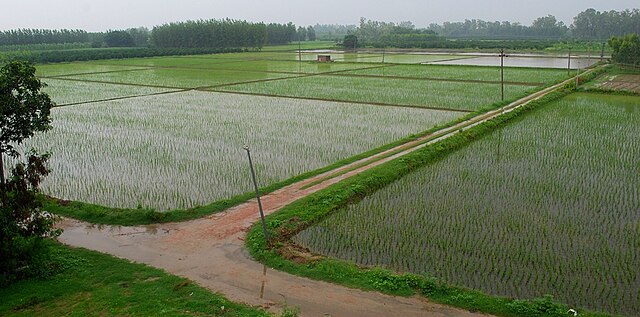India’s 2025 sowed kharif (autumn) crop area has increased to 103,981,000 hectares (ha), up 4% year-on-year (y-o-y).
According to an August 15, 2025 release by the Ministry of Agriculture and Farmers Welfare, 2025 has 3,739,000 ha above 2024’s.
Coarse cereals registered robust plantings at 18,234,000 ha, a modest yearly growth by 912,000 ha. Maize drove these slim gains with some 982,000-ha area increase from 2024.
Staple rice garnered 39,859,000 ha, a staggering 3,667,000-ha increase y-o-y due to a currently good monsoon.
Oilseeds, Plantation Crops Retract
All was not positive for pulses, oilseeds and some plantation crops, whose area either grew slightly or retracted.
Pulses gained only 114,000 ha y-o-y, to 10,952,000 ha, while oilseeds shed 674,000 ha to 17,864,000 ha in 2025. Driving the oilseed area decline were peanuts, sesame and soy but buoying them was castor seed, which gained 121,000 ha.
Also espousing acreage reduction was cotton, to 10,787,000 ha or 324,000 ha below 2024’s cultivation.
This at a time when India and the United States are tiffing around exports such as textiles over tariffs. Cotton is a major source of fiber for processing yarn and knitting textiles for export.
Not so, sugarcane, which beat unappealing price odds to notch 5,731,000 ha or 164,000 ha above 2024’s sown area.
The government is still compiling data on the ongoing Indian summer sowing of kharif crops. For the time being, below are some extra facts about monsoon-time agriculture on the subcontinent.
India Kharif Crop Statistics
There are two major crop production cycles in India, namely autumn (kharif) during monsoon rains and spring (Rabi). Kharif is the most important as during which 50% of crops in India thrive under monsoon rainfall. Farmers normally sow in June through July and reap from September through October. The main crops are grains like rice, maize and sorghum, oilseeds like peanuts and sunflower, pulses like moong and industrial crops like cotton. India averages around 164 million tonnes of kharif crop production.
The table below, mined from the government of India, gives production details of major kharif crops in 2023-24:
| Crop | Production [tonnes] |
| Rice | 106.313 million |
| Maize | 22.482 million |
| Tur | 34.21 million |
| Urad | 15.05 million |
| Green grams [moong] | 14.05 million |
Fig: kharif crop production in India, 2023-24
Which is India’s main Kharif crop?
Rice is India’s biggest kharif crop in both cultivated area and production, during which the country produces 20% of the global harvest. In the 2024-25 season, paddy acreage was at 36,292,000 hectares while production hit an 11-year record at 120 million tonnes. Complementing rice are green grams or moong and other pulses at 7 million tonnes, as of the 2024-25 season.
Do coarse grains contribute much to kharif crop production?
Coarse grains are only second to rice in India’s kharif production totals. The annual output averages 35.091 million tonnes, according to the government. Out of this, maize garners around 22.482 million tonnes, as of the 2023-24 season.
